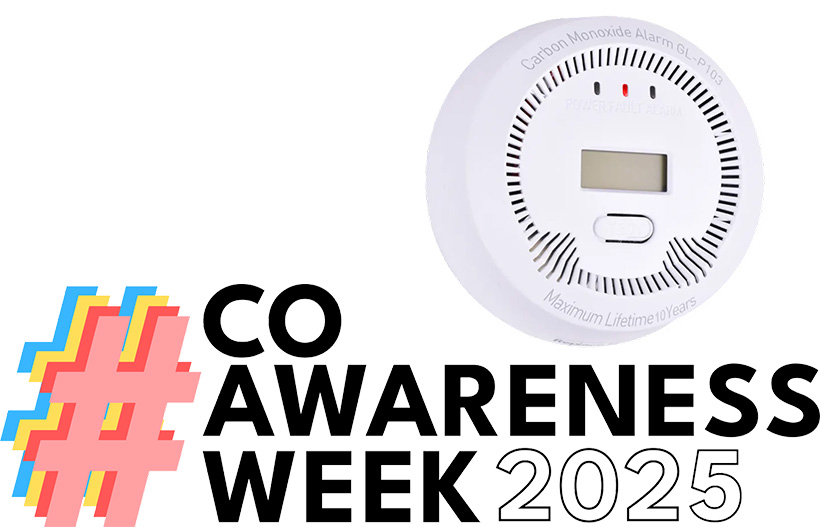
New data has revealed 26% of carbon monoxide (CO) call-outs attended by SGN engineers are considered ‘false alarms’ linked to battery or alarm failure.
The energy company has highlighted the safety statistics as part of this week’s Carbon Monoxide Awareness Week and is urging people to check their alarms haven’t expired and where applicable ensure they are using working batteries.
The insight comes from the Carbon Monoxide Research and Analytics (CORA) platform⁺, supported by Great Britain’s Gas Distribution Networks, including SGN.
According to CORA,
- In 2024, SGN attended 21,603 CO incidents across their Southern network, of which 16,774 (77%) were either suspected or confirmed to have CO present
- In Scotland, in the same period, SGN attended 10,341 CO incidents, of which 6,774 (65%) were either suspected or confirmed to have CO present.
The news comes after SGN revealed in the summer that analysis of households with digital CO alarms showed 95% had not checked their devices in 2024. With the winter school holidays around the corner, SGN is now urging households to test their CO alarms to protect their loved ones from the dangers of CO poisoning.
Some symptoms of CO poisoning – including headaches, nausea, dizziness, and breathlessness – can be mistaken for other illnesses, like a cold, a hangover or food poisoning, making it particularly difficult to spot in the winter months. Failing to test a CO alarm is particularly dangerous, as the gas cannot be seen, smelt, or heard and doesn’t have a taste, meaning it is very difficult to know if CO is present in the home. Other symptoms include collapsing and a loss of consciousness.
Dan Edwards, SGN Social Impact Programme Lead, said: “It’s deeply worrying that so many people aren’t testing their carbon monoxide alarms. Carbon monoxide is known as the ‘silent killer’ for a reason – it’s invisible, it’s odourless, and it can be deadly. Having a CO alarm is essential, but it’s just as important to test it regularly to make sure it’s working correctly and helping to keep your household safe.”
“While testing your alarm to check for faults, it’s also a good idea to make a note of its expiry date, which can normally be found printed on the alarm itself, so you can replace it before it reaches the end of its life. You should also get your appliances fitted and checked annually by a Gas Safe™ registered engineer.”
You should buy and fit a CO alarm which will alert you and complies with safety standard BS EN 50291. You can buy CO alarms in DIY stores, supermarkets and from reputable online stores. It’s important to remember that a smoke alarm is not a carbon monoxide alarm.
If you're worried about carbon monoxide in your property, follow these steps:
- Open all doors and windows
- Move everyone outside into the fresh air
- Call the Gas Emergency Service on 0800 111 999 or via textphone (minicom) on 0800 371 787. If you're a British Sign Language (BSL) user, you can use Convo (previously known as SignLive) to contact the National Gas Emergency Service free of charge.
For more information about staying safe from CO, visit sgn.co.uk/CO
⁺ This comes from SGN’s workload data, which is aggregated in the CORA platform to provide insights. These statistics are up to and including 31 December 2024.




